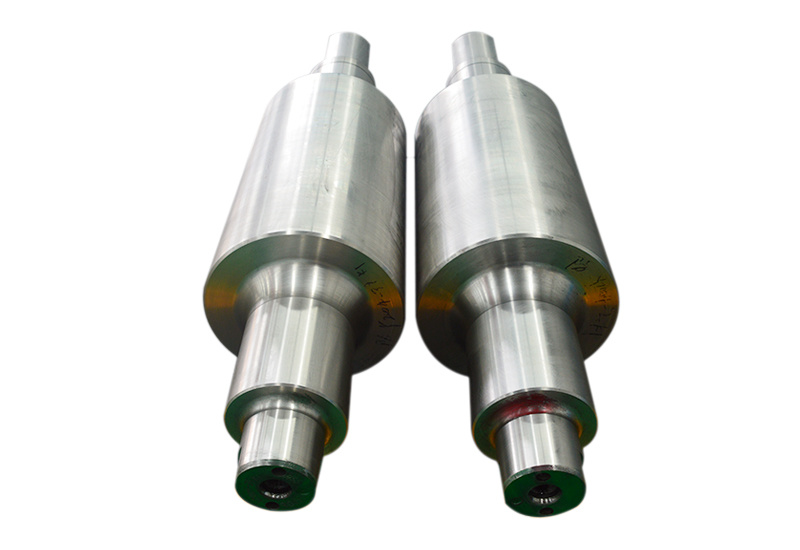
17
2022
-
08
What are the causes of fracture in cold rolling rolls?
Currently, high-speed wire rod finishing Roll mills generally consist of 8 to 10 rolling mills. Each rolling mill bears different rolling force and impact force. As the rolling pass increases, the speed of the roll ring will greatly increase, and the wear of the roll ring will also increase. Therefore, when selecting the material of the roll ring for each rolling mill, the impact force and wear resistance of each rolling mill should be fully considered. Otherwise, improper material selection will lead to roll collapse during finishing, and the cause of roll collapse is difficult to identify. In each rolling mill during finishing, due to the large cross-sectional size and deformation of the workpiece, the rolling load and impact force on the roll ring of the front stand are large. Therefore, the roll rings of the first few rolling mills of the finishing mill should use materials with high strength index and good resistance to thermal fatigue. The wear resistance index should be ranked second; however, the rolling load and impact force of the rear stand roll ring are smaller, so the wear resistance and resistance to thermal fatigue of the roll ring should be prioritized.

Finishing Roll Internal workpiece shaking and steel stacking during the process:
1. Poor roll matching
High-speed wire rod mills have strict requirements for finishing inner roll rings, because high-speed wire rod finishing mills are collectively rotated by a 6000-kilowatt variable-frequency AC speed-regulating main motor, and the gear ratio between the stands is fixed and cannot be changed. It is impossible to adjust the speed of a unit. The finishing mill must not only meet the gear ratio between the stands, but also meet the outer diameter error of ±0.05 mm for the same pass roll ring. At the same time, the roll diameter of any circular workpiece stand is not allowed to be smaller than the roll diameter of the previous stand. If the roll diameter of the elliptical workpiece is larger than the previous circular hole roll, the rolled workpiece will vibrate between the two stands, leading to steel stacking between the two stands. During the steel stacking process, the heat of the workpiece is transferred to the two roll rings, causing the roll ring temperature to rise and thermal stress to concentrate. After sudden water supply, due to the large temperature difference between the water and the roll ring, the roll ring will break.
2. Poor roll gap setting
Due to the strict requirements for the roll matching of the finishing inner roll ring, operators are required to strictly set the roll gap of each stand according to the roll gap value specified in the process specifications during finishing to reduce the steel stacking caused by poor roll gap setting between the stands, and reduce the increase in the probability of roll ring breakage caused by the impact on the roll ring and the thermal stress concentration caused by steel stacking, to ensure the smooth progress of production.
3. Poor final rolling workpiece size
After the workpiece leaves the pre-finishing Roll mill, the impact force on the roll ring of a rolling mill in the finishing mill increases, and the deformation increases. Due to the poor workpiece size, especially when the workpiece size is large at the same time, the rolling force increases, which also increases the rolling force of the first few rolling mills of the finishing mill, leading to an increase in the shaking of the workpiece between the first few rolling mills, and increasing the probability of roll ring breakage in the first few rolling mills of the finishing mill. Therefore, the shape and size entering the finishing mill should be strictly controlled to be as close as possible to the size required by the rolling process. The inlet cross-sectional size of the torsion-free finishing mill is very important. Ideally, they should be kept between ±1% and ±1.5% of the standard value.
Roll
Innovation-driven, win-win cooperation
2025-06-17
